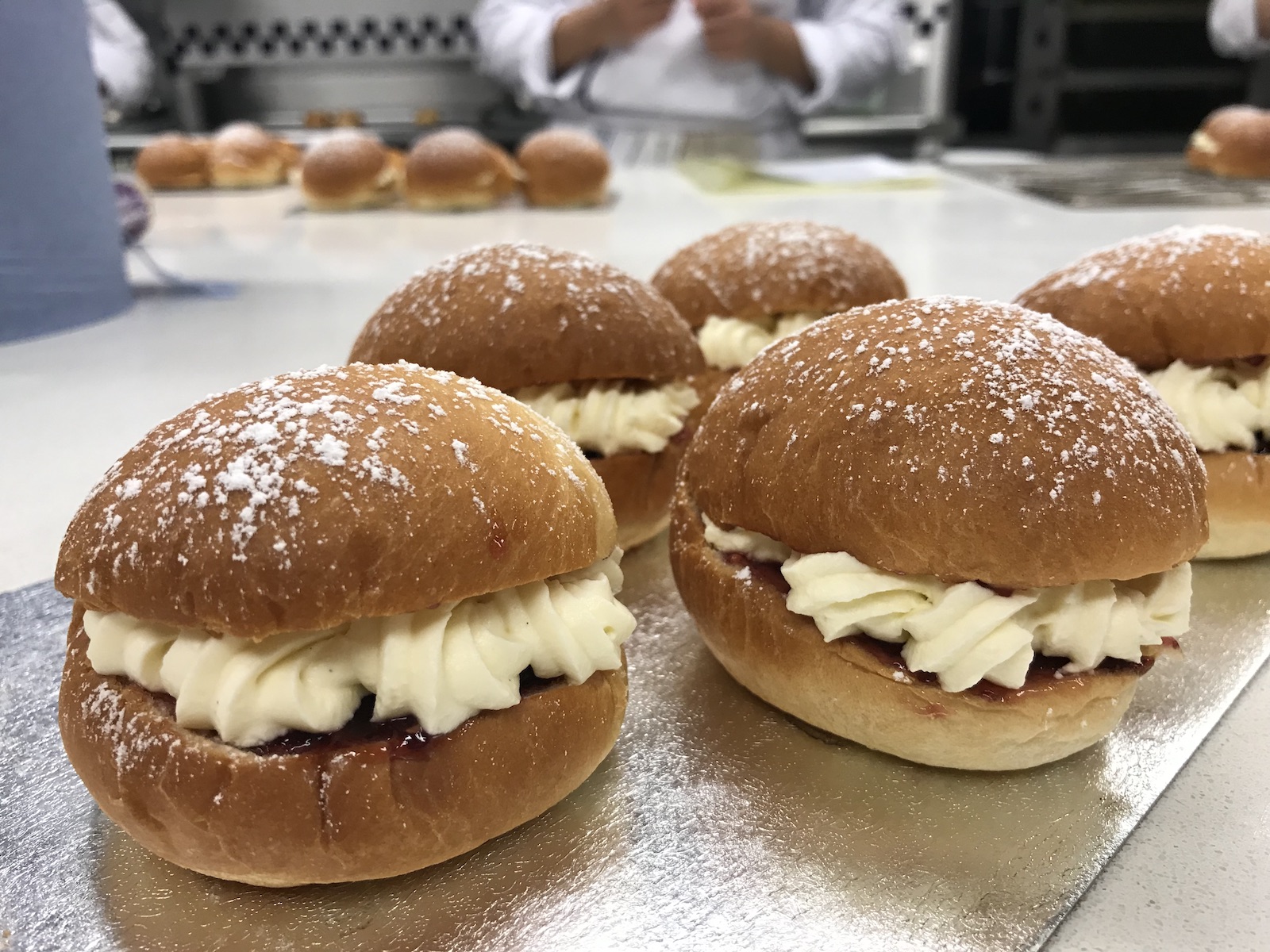This post may contain affiliate links. Please read the disclosure policy to learn more.
Thank you for supporting this blog!
Week Two: Viennoiserie
During the second week of Intermediate Pâtisserie, we focused on Viennoiserie.
Viennoiserie serves as the “bridge” between pâtisserie and boulangerie. These are pastries which are generally made with an enriched dough. Enriched doughs are similar to bread doughs, but with added ingredients such as milk, eggs, butter, and sugar. Breakfast pastries like croissants, danishes, pain aux raisins, and pain au chocolat are made with enriched dough.
For our first lesson of the week, we learned to make a variety of British classics: Devonshire splits, hot cross buns, and Chelsea buns.
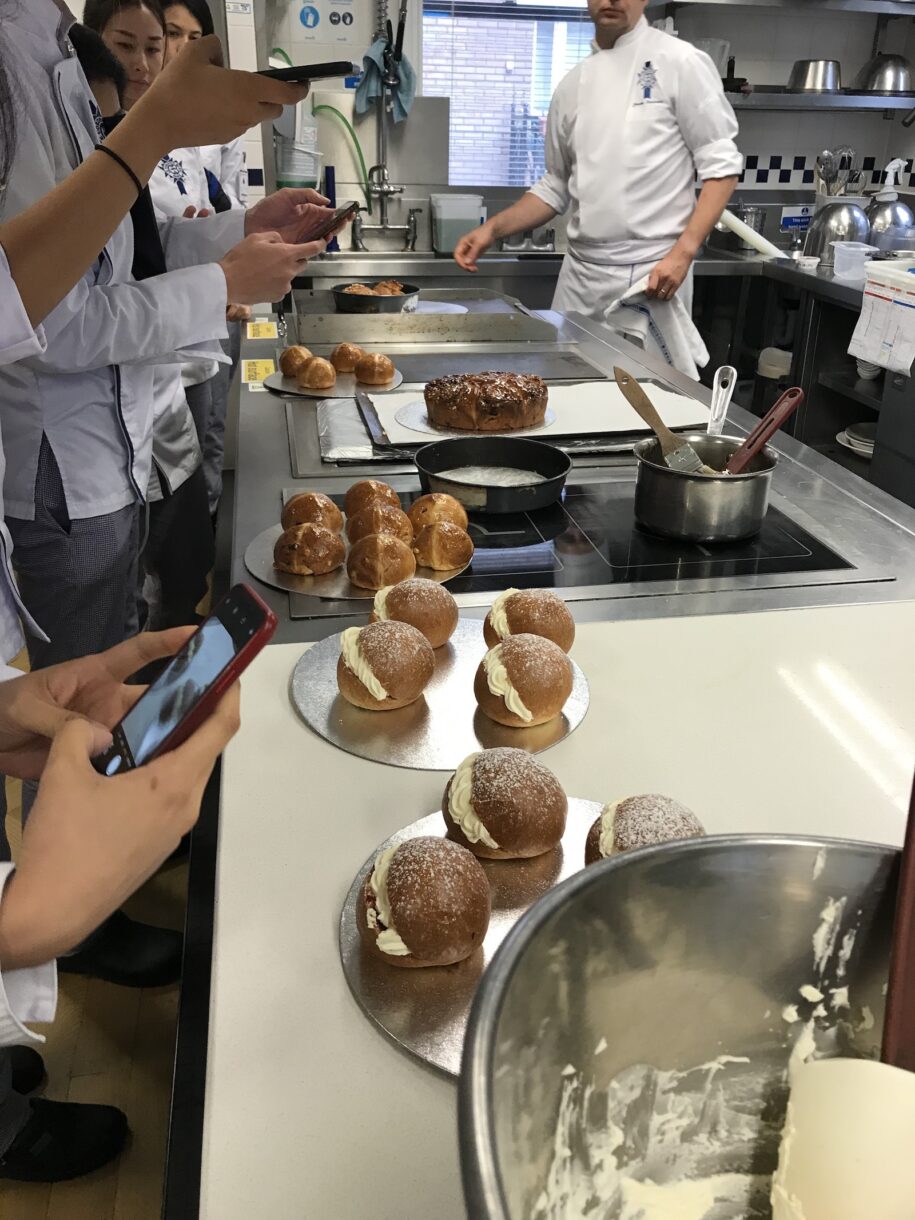
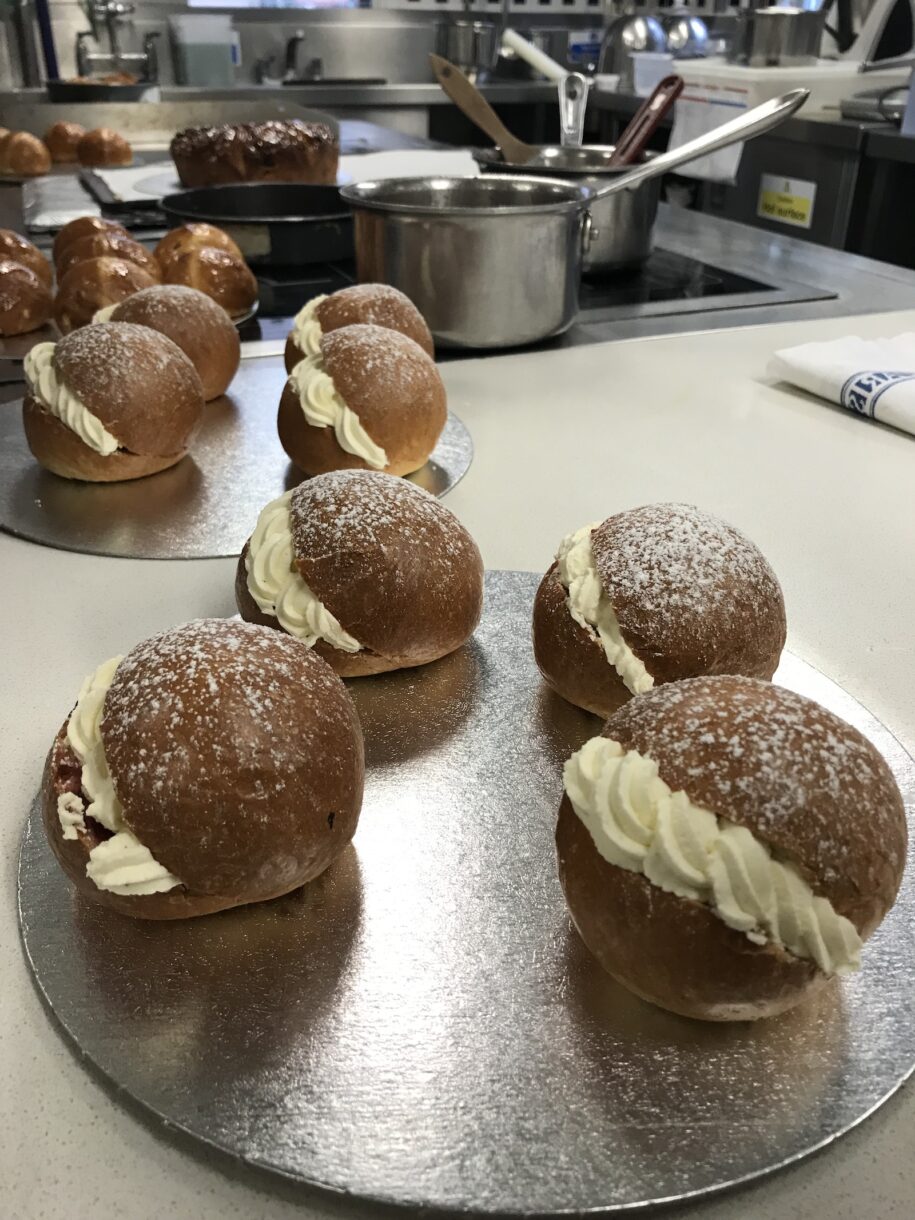
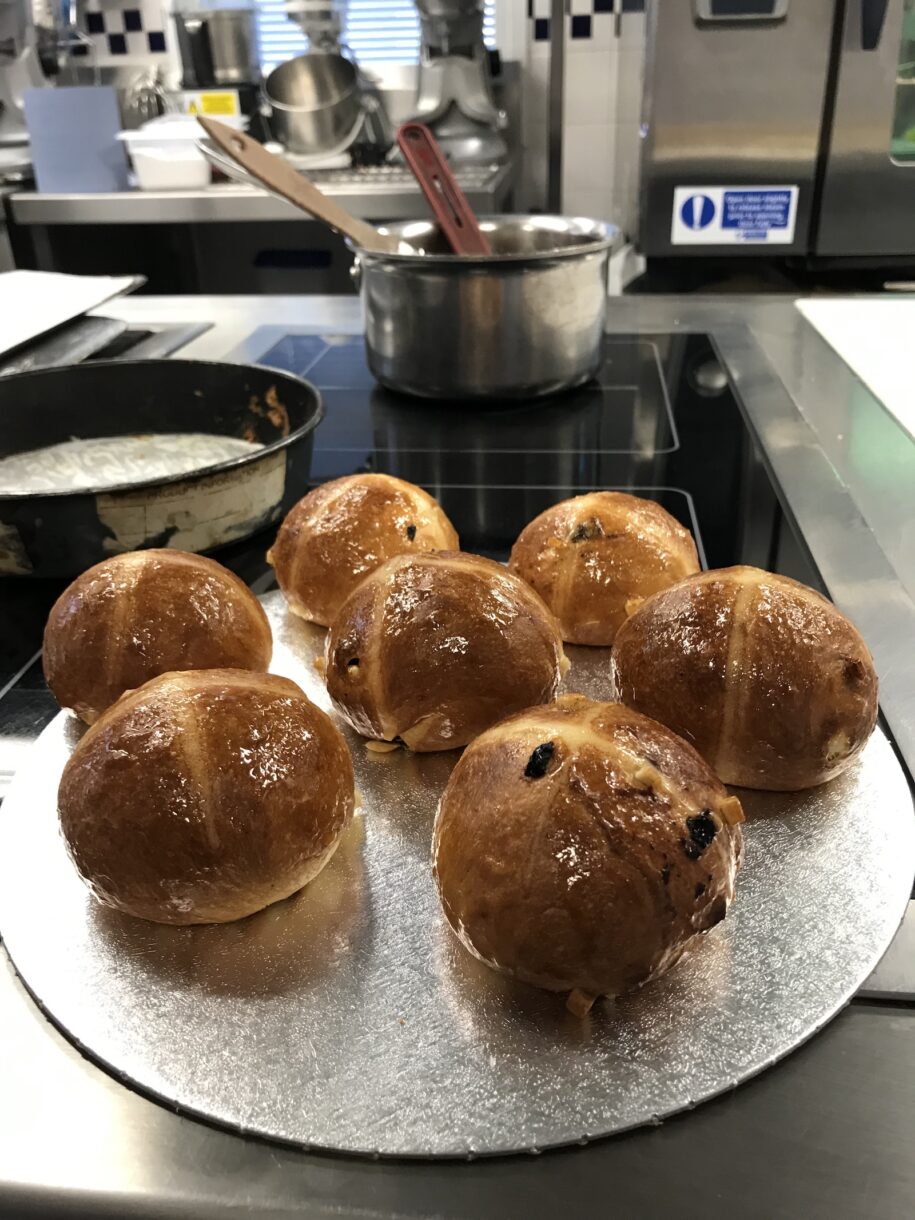

In practical, we made the Devonshire splits and the hot cross buns. I hadn’t tasted either of these before, but am happy to report that they are both delicious! The Devonshire splits are especially good, sort of a cross between a scone and a slightly-less-heavy doughnut, filled with jam and a sweet vanilla whipped cream and topped with a dusting of powdered sugar:
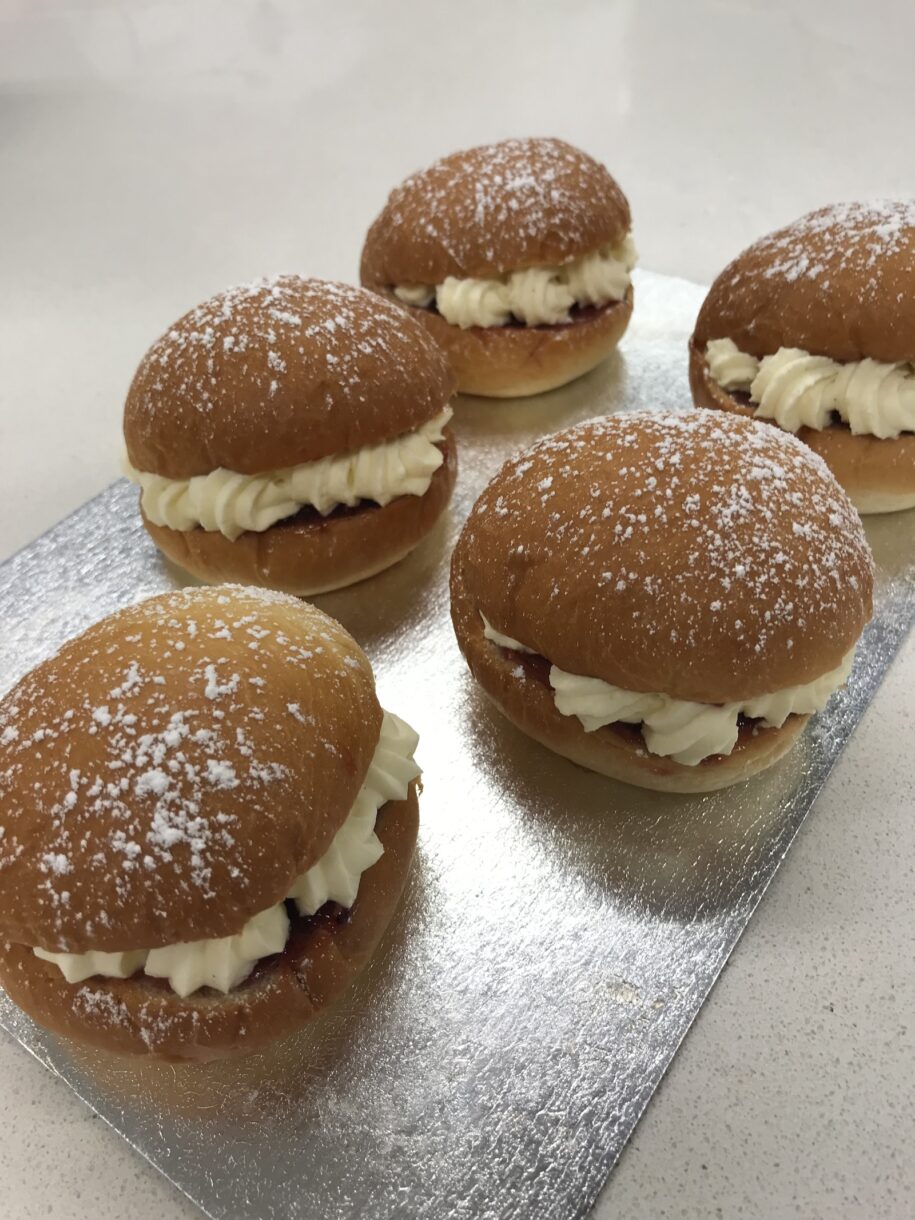
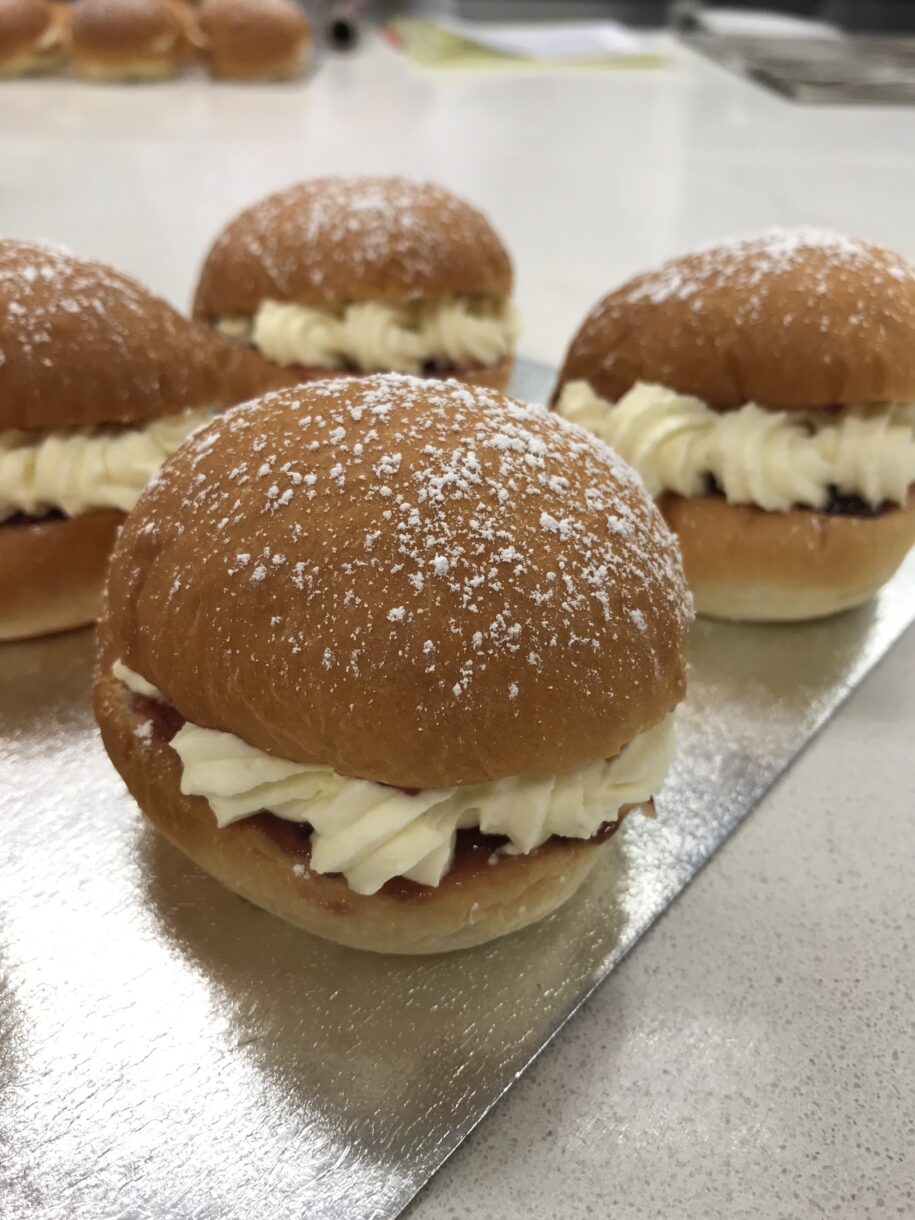
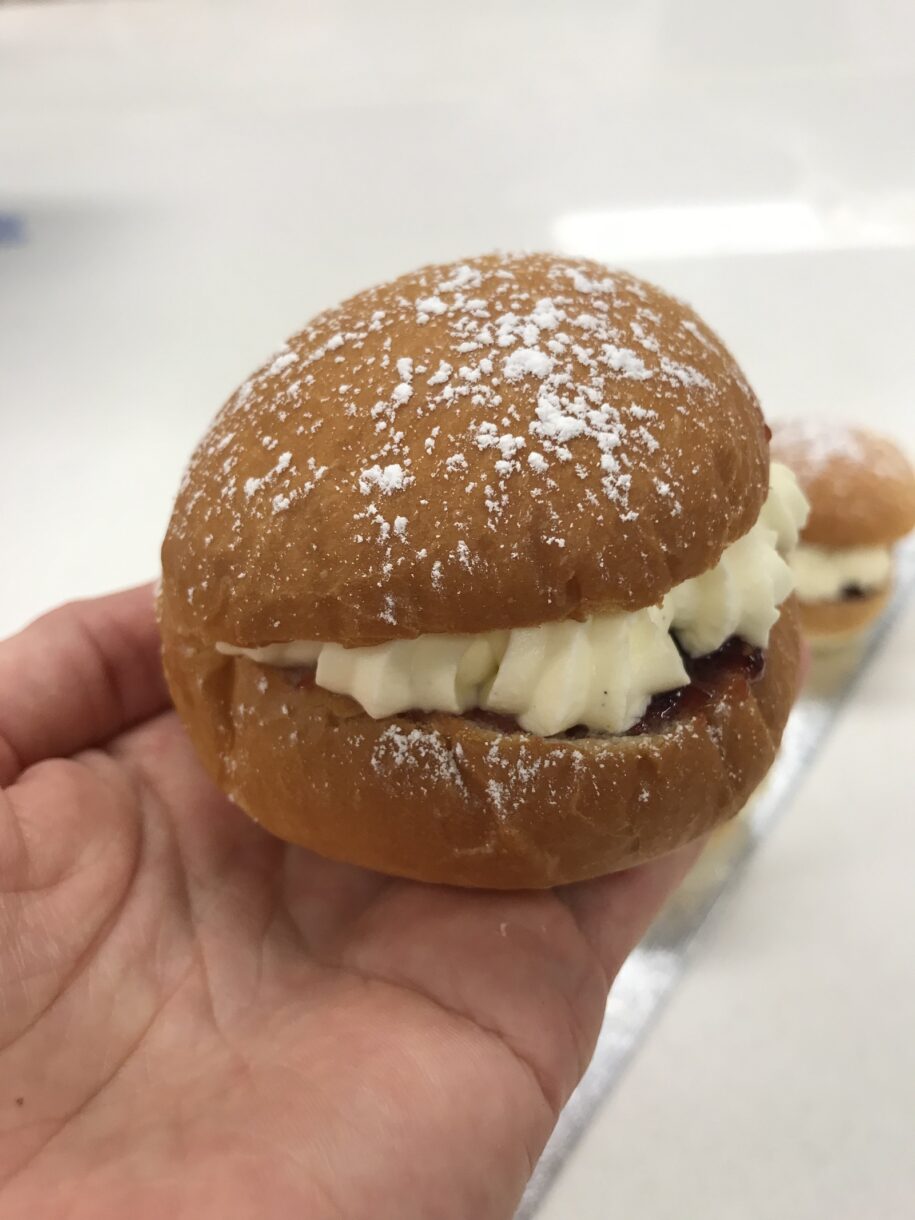
My hot cross buns turned out quite nicely as well, and I enjoyed eating them for breakfast the next morning. They are definitely best served toasted, and with a big pat of butter!


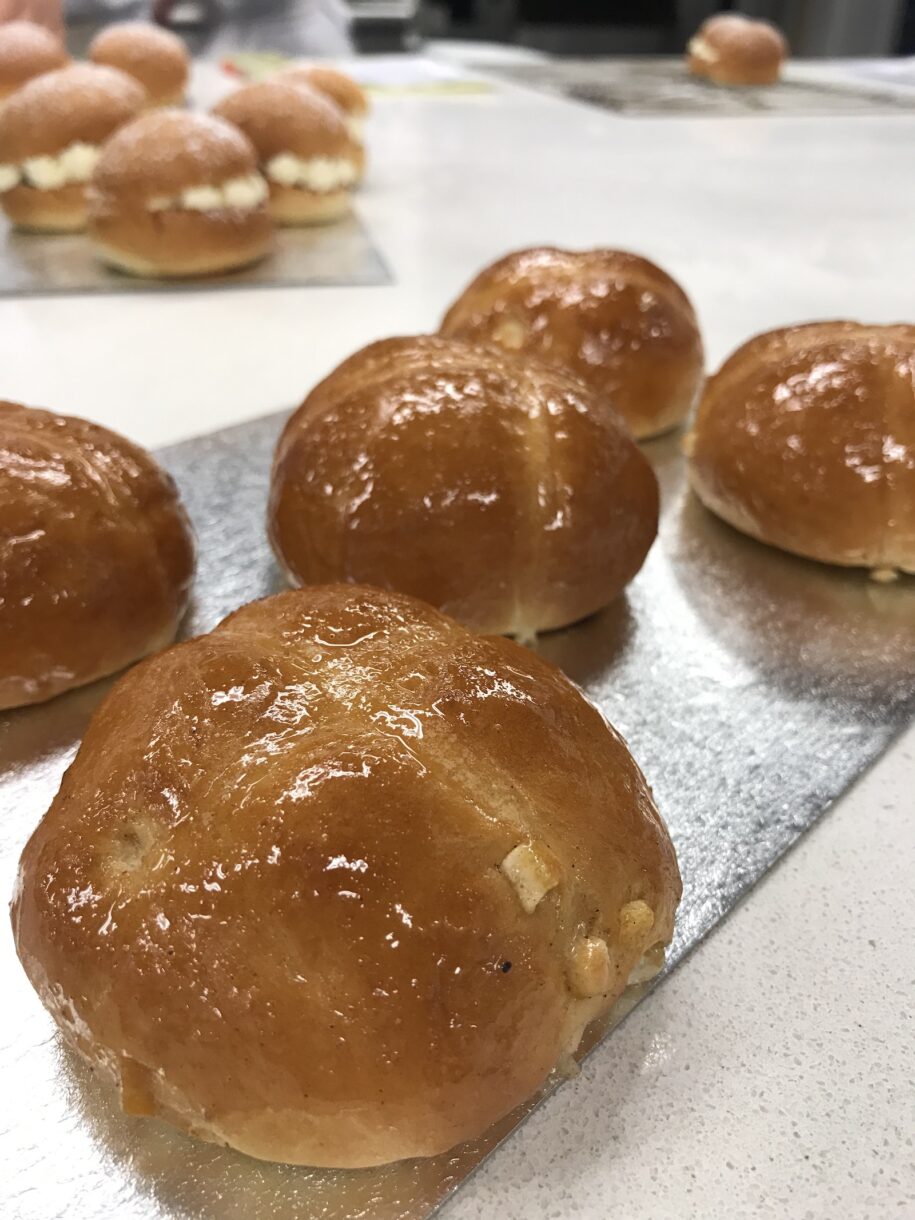
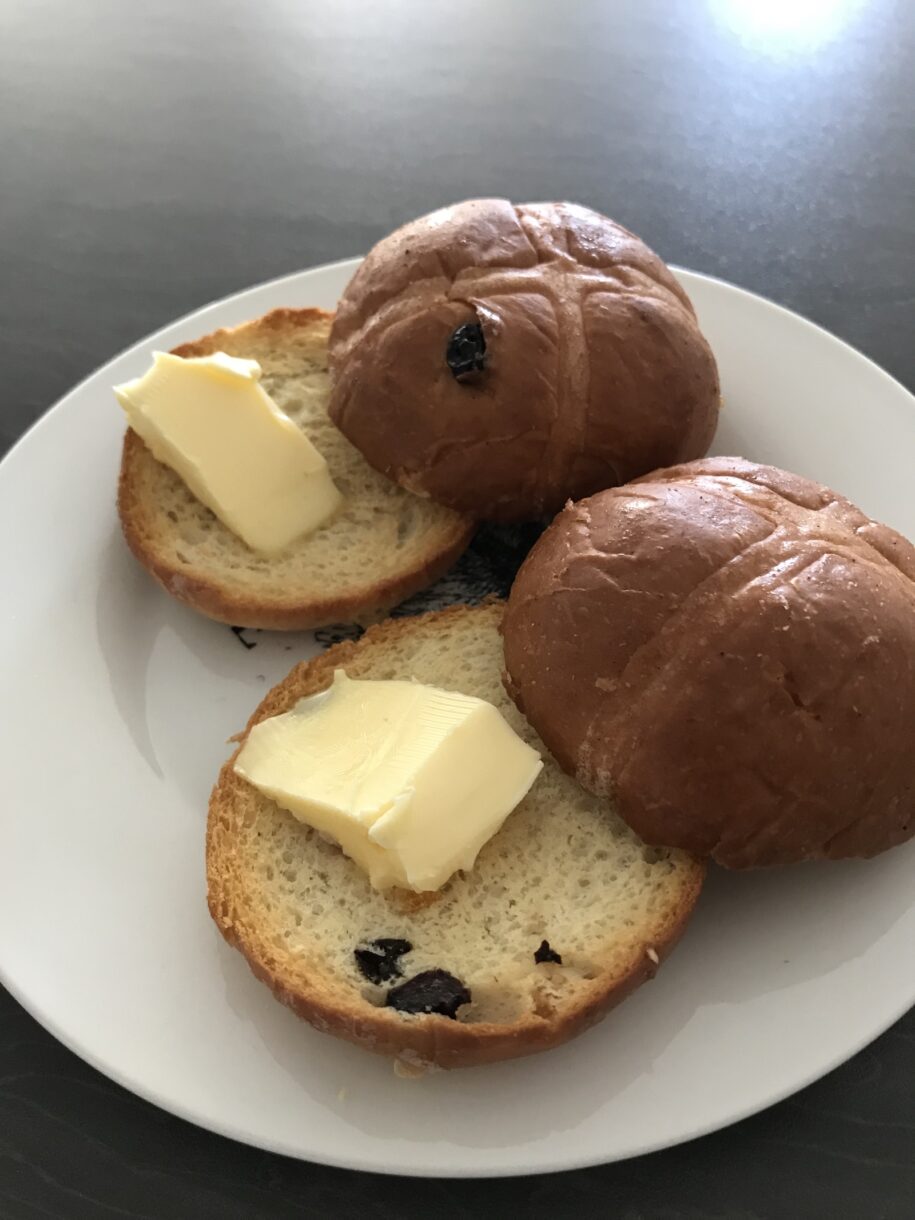
More Bread!
In our next demo, we continued our exploration of viennoiserie, learning to make pain aux raisins, pain au chocolat, croissants, and brioche:
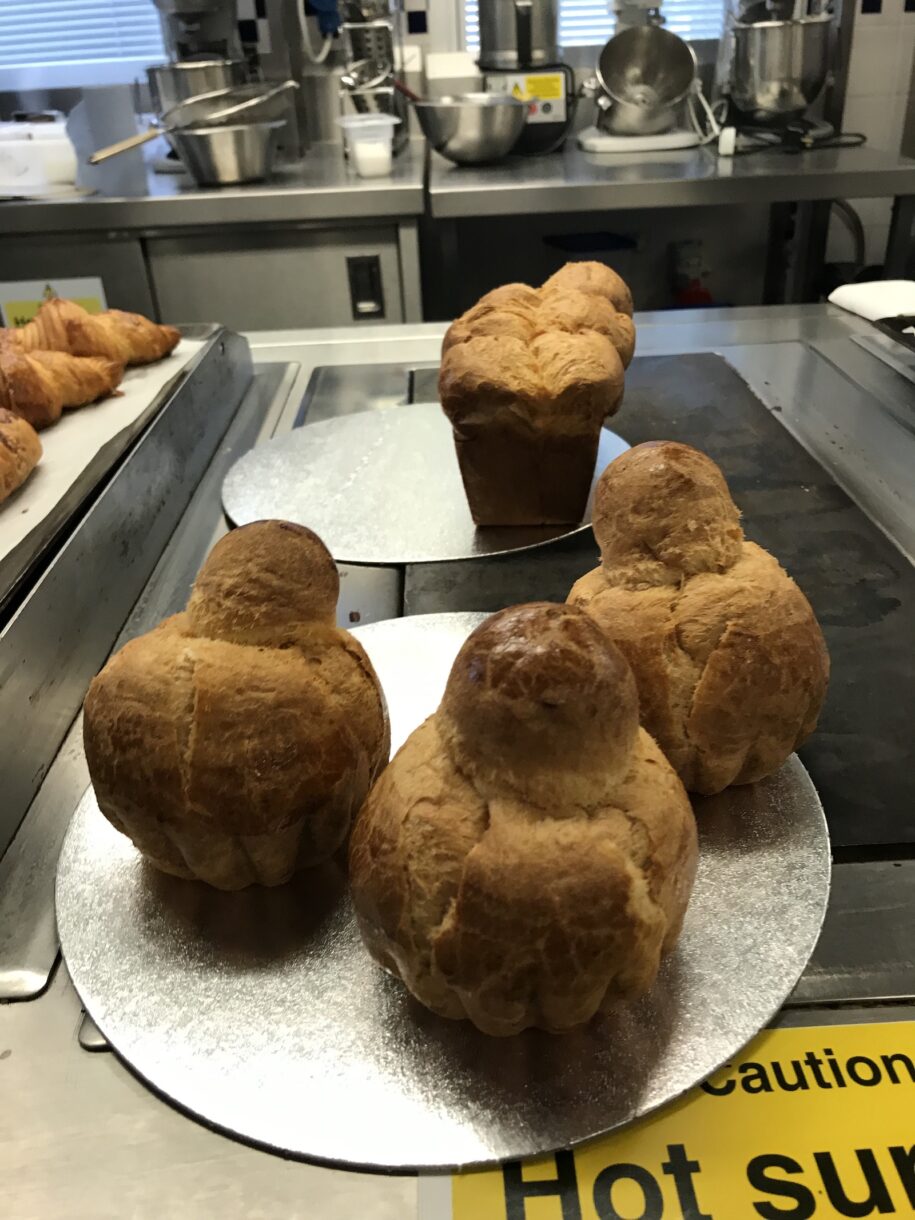
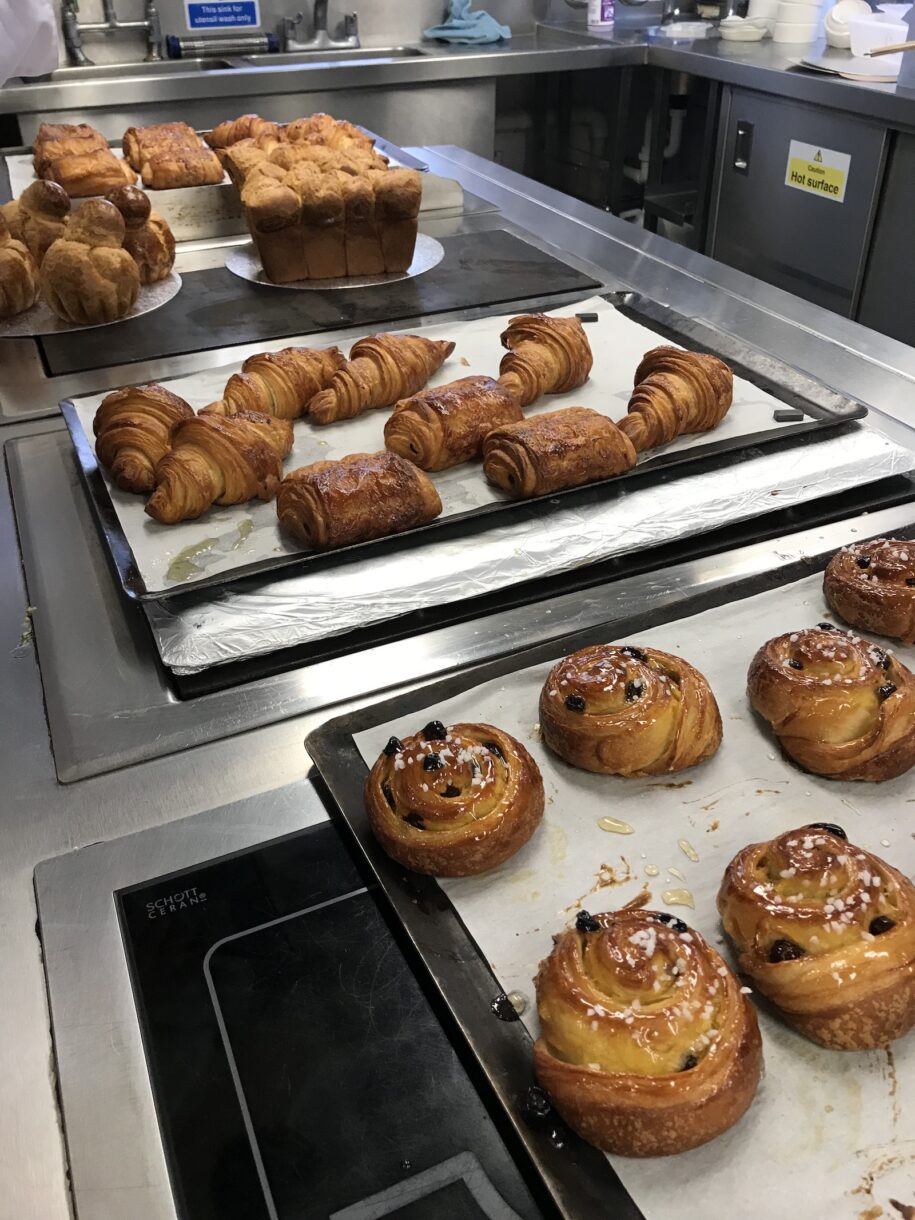
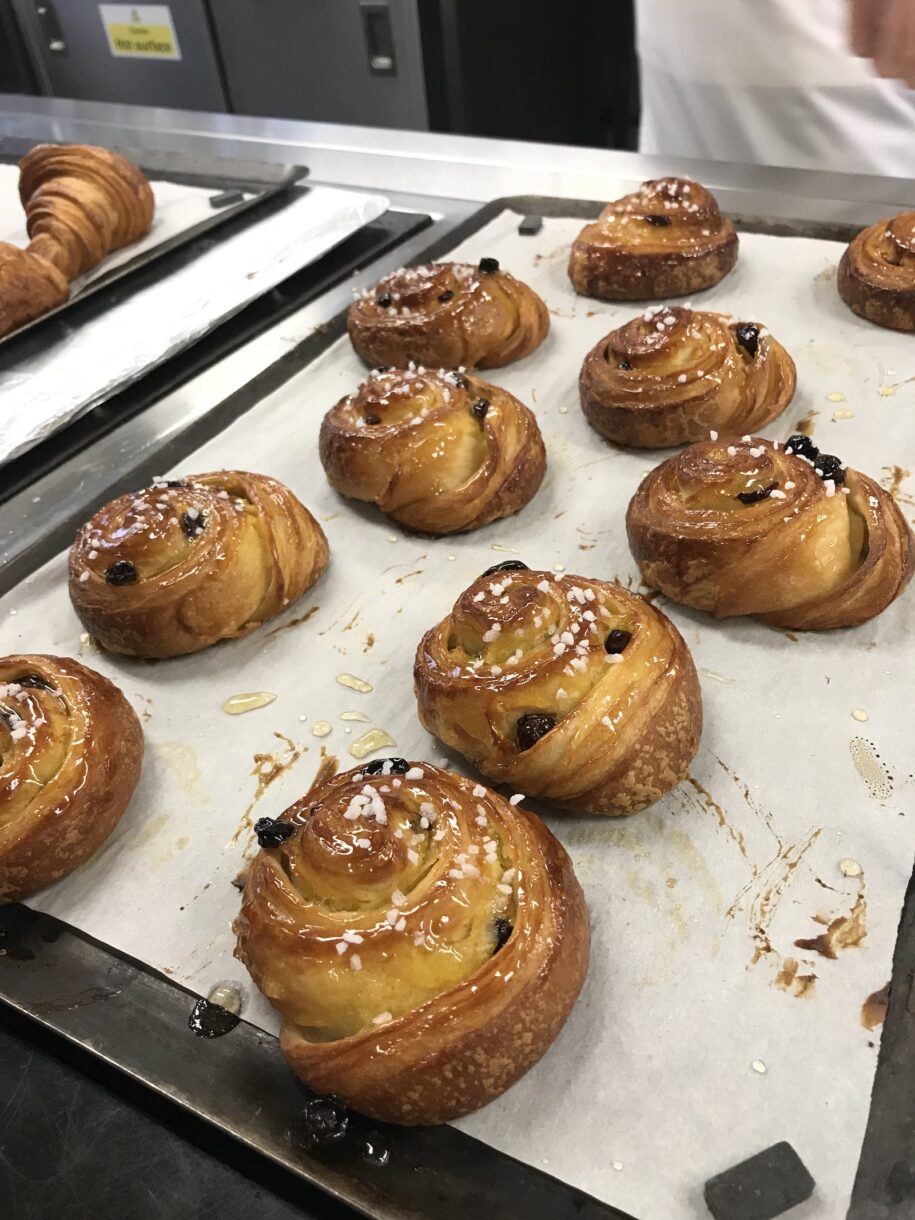
We made all of the above in our practical, using pâte à brioche (brioche dough) and pâte levée feuilletée (laminated yeast dough) we’d made in our practical class the day before.
Overall, I thought I did reasonably well with these. I definitely need some practice with rolling out the pâte levée, since the butter in my croissants turned out to be a bit uneven, and some of my finished croissants baked up darker than others. The shaping of my pain au chocolat could definitely be better (although they definitely tasted good!) as could the shaping of my brioche. I was most happy with the shaping of my pain aux raisins, which received the best feedback from the chef.
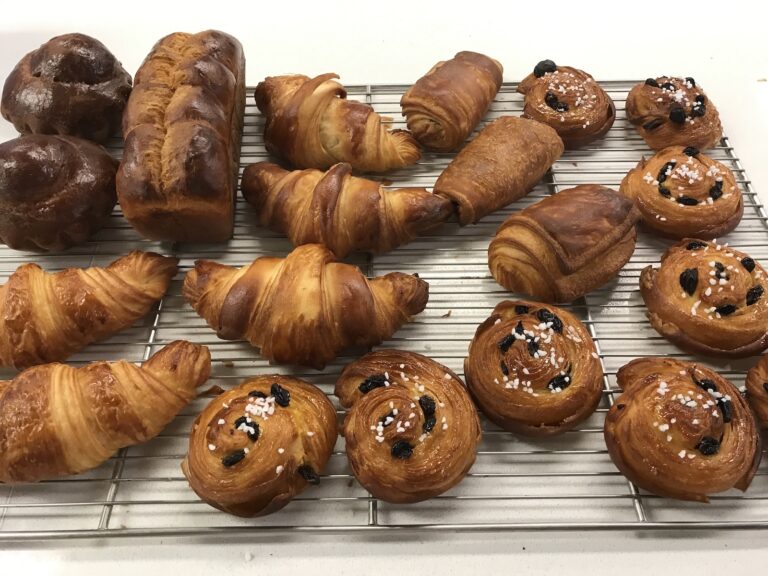
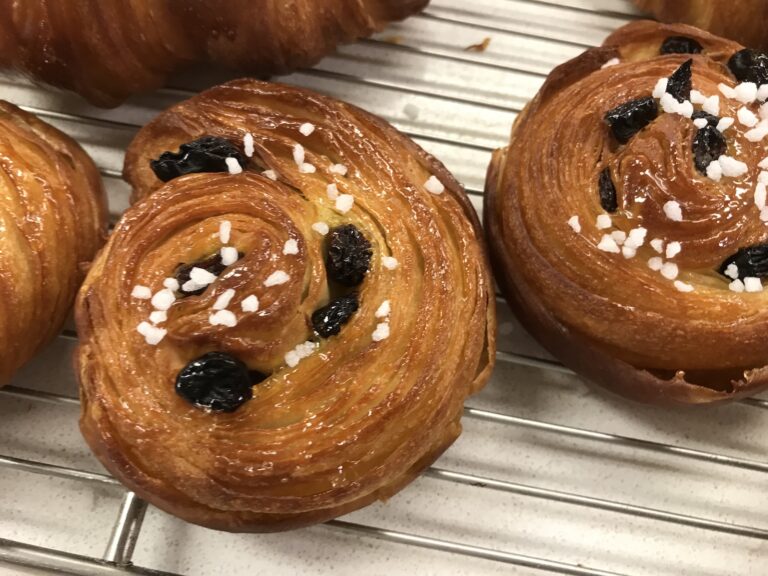
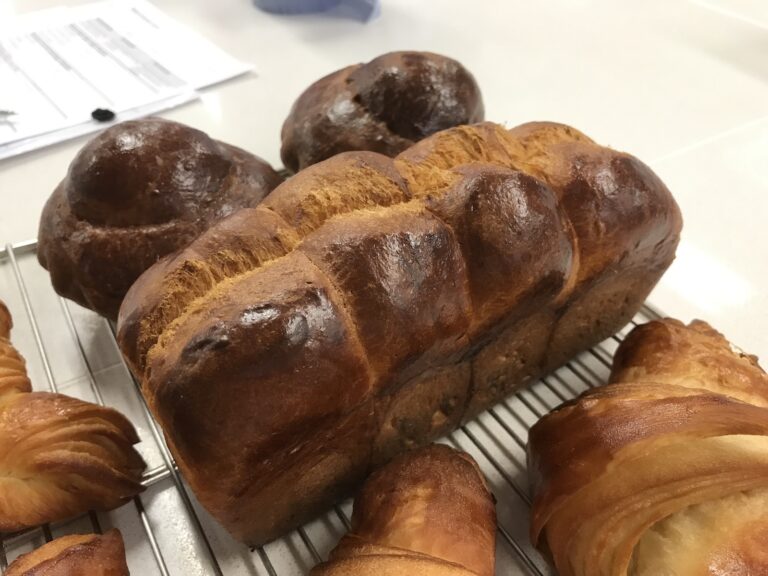
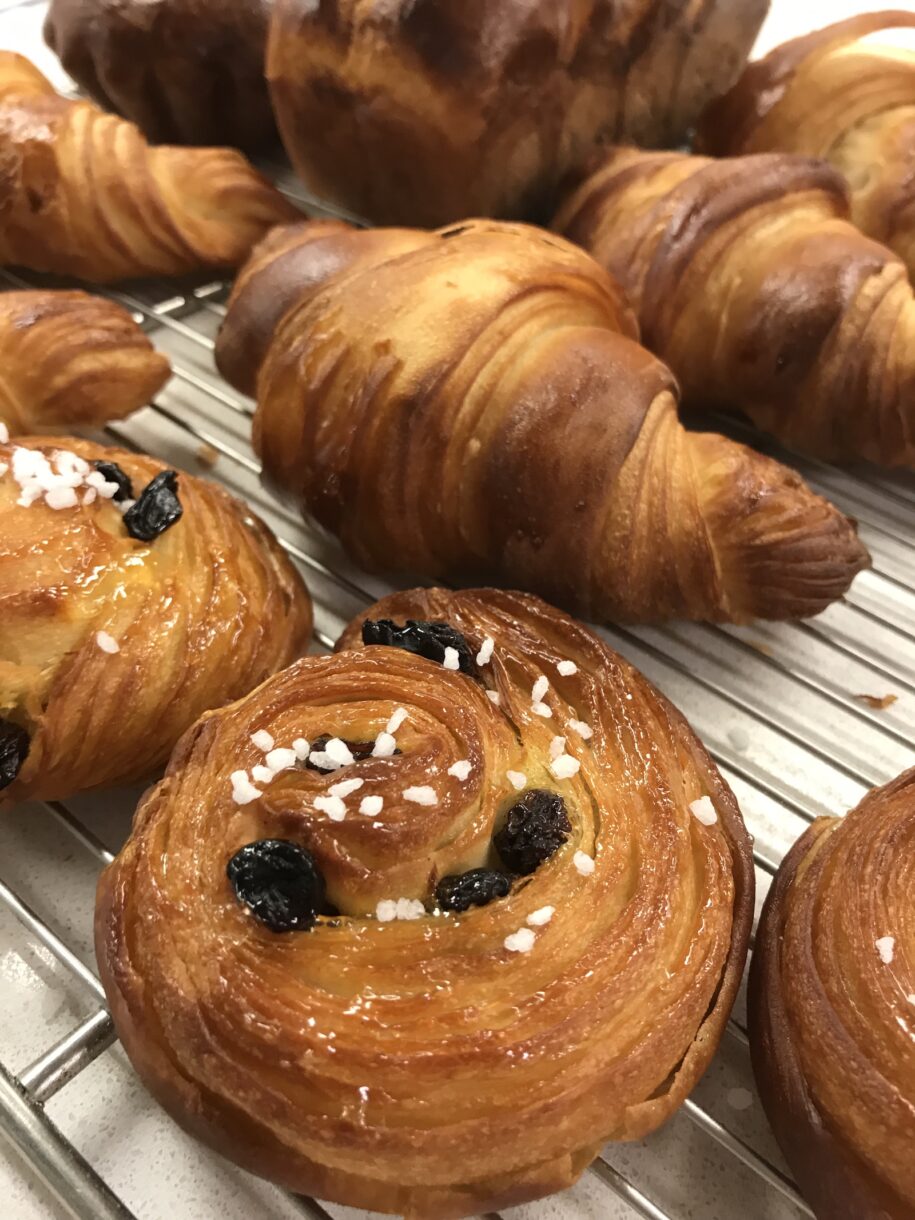


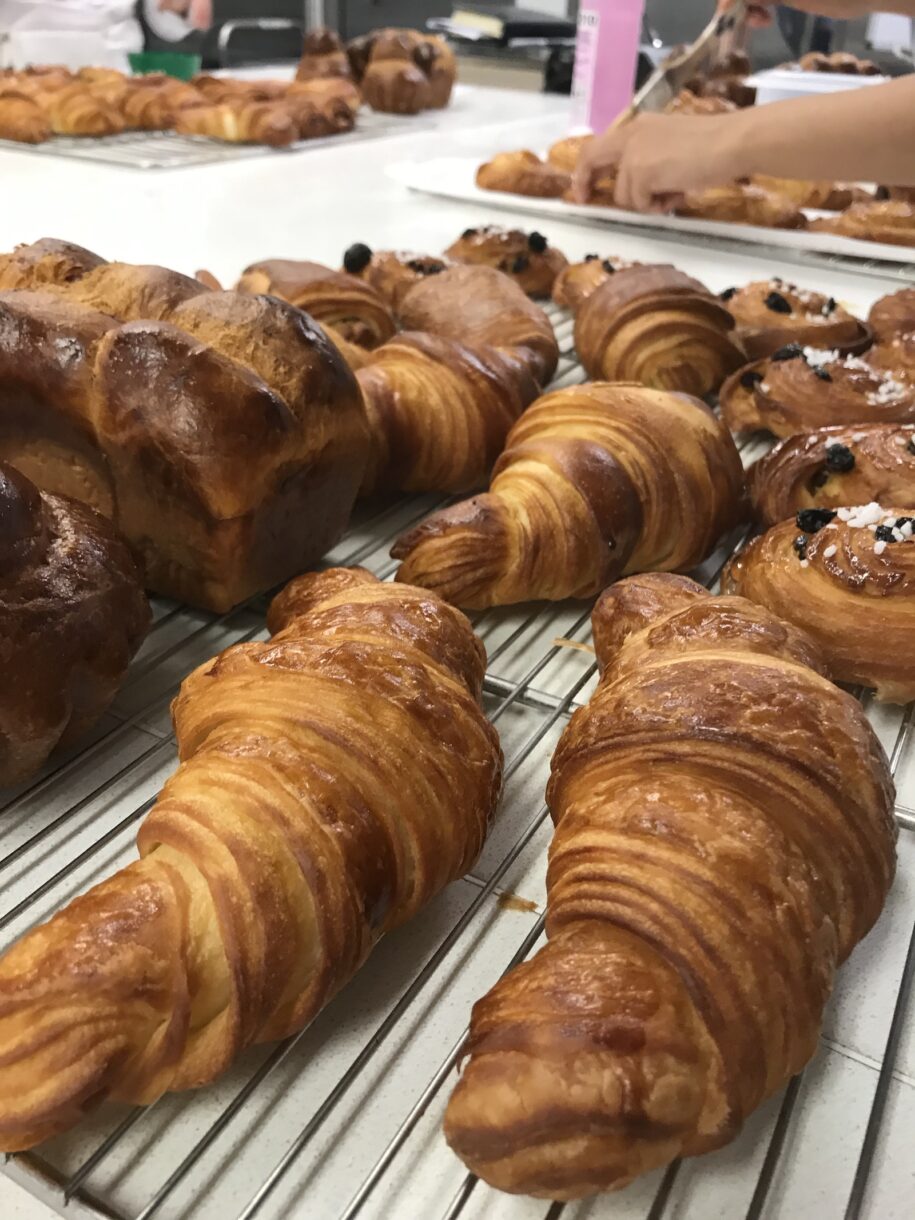


Playing Around with Puff Pastry
Outside of class, I had some free time to play around with puff pastry a bit more. I tried my hand at making the chaussons aux poires (pear turnovers) we’d watched the chef make in the demo the week before. These turned out so well, and I’ll definitely be making them again!
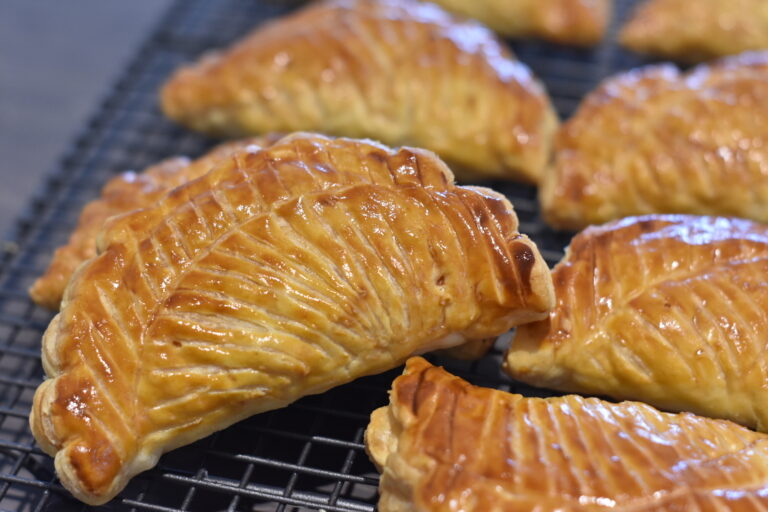
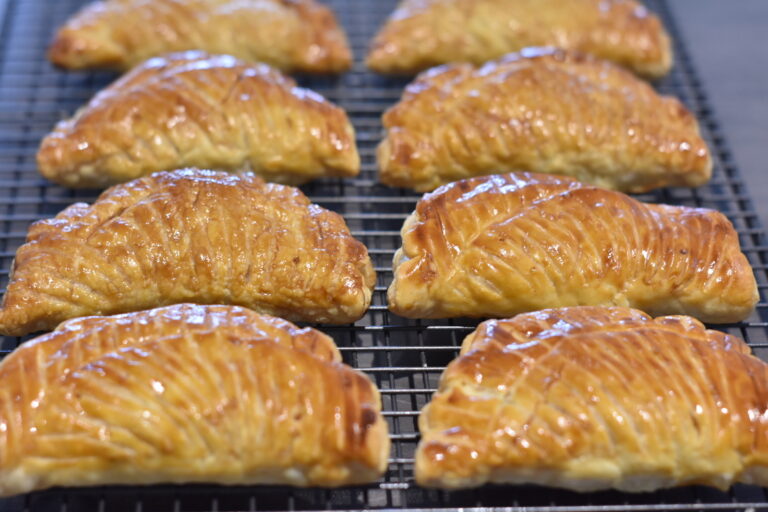
Week Three: Boulangerie and Chocolatework
To begin week three, we continued our exploration of breadmaking. In the demo, we watched the chef make three types of breads: foccacia (Italian olive oil bread), pain de seigle (rye bread), and baguette viennoise (breakfast bread enriched with milk, butter, and eggs).
Here are the chef’s demo breads:

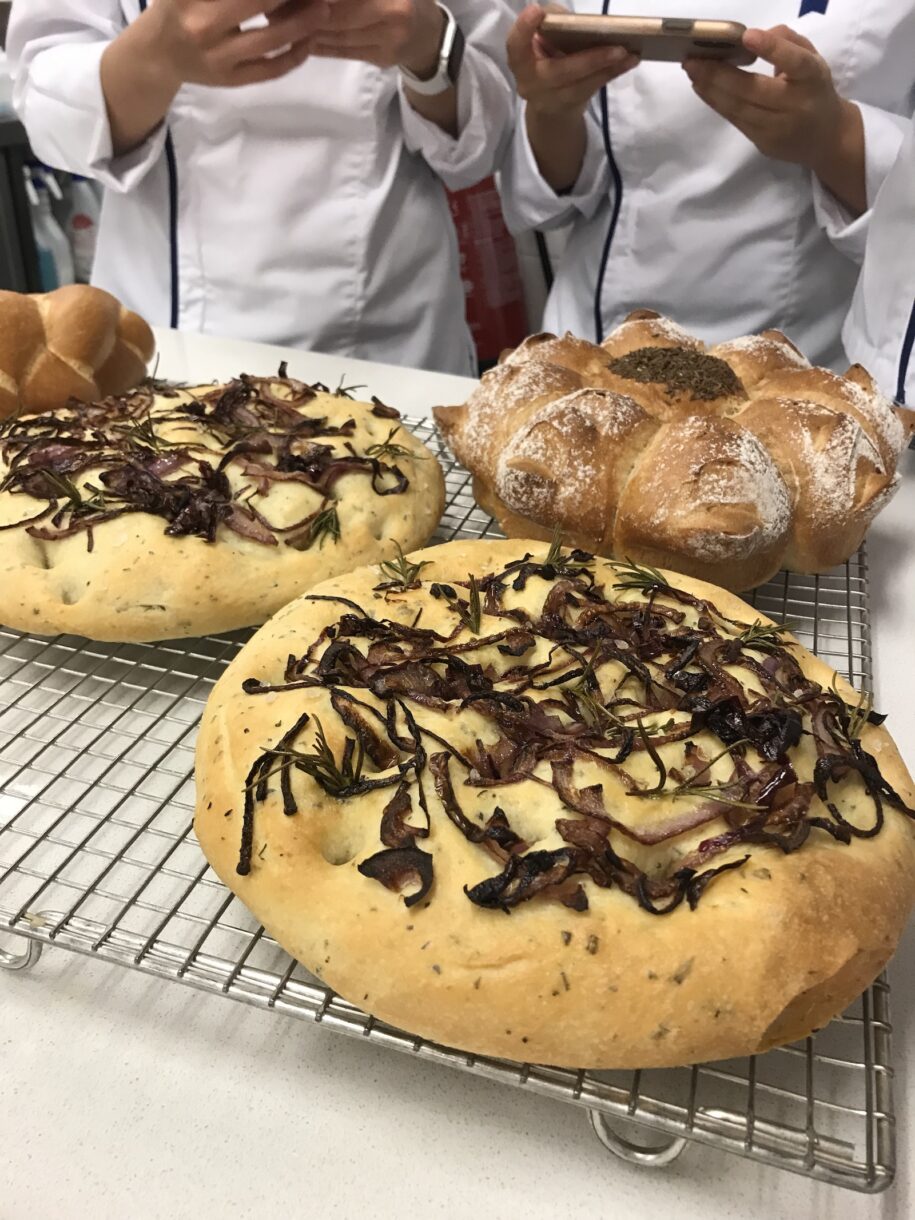

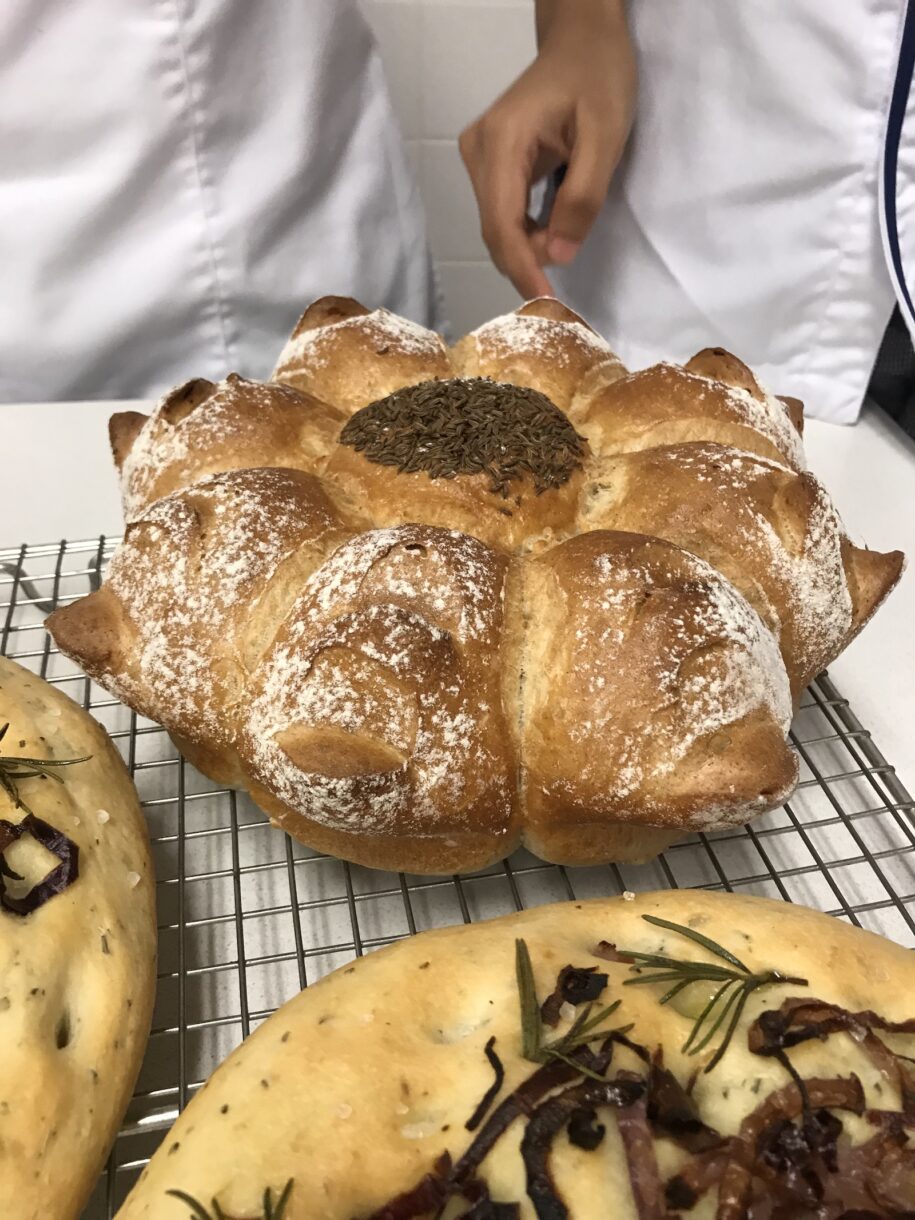
In the practical, we worked in pairs to create all of the breads from the demo. I was pretty happy with my bakes, although my braid on the viennoise bread could’ve been prettier, and I definitely needed to brown the onions a bit less before topping the foccacia. But not a bad class overall, and my freezer is now well-stocked with bread!
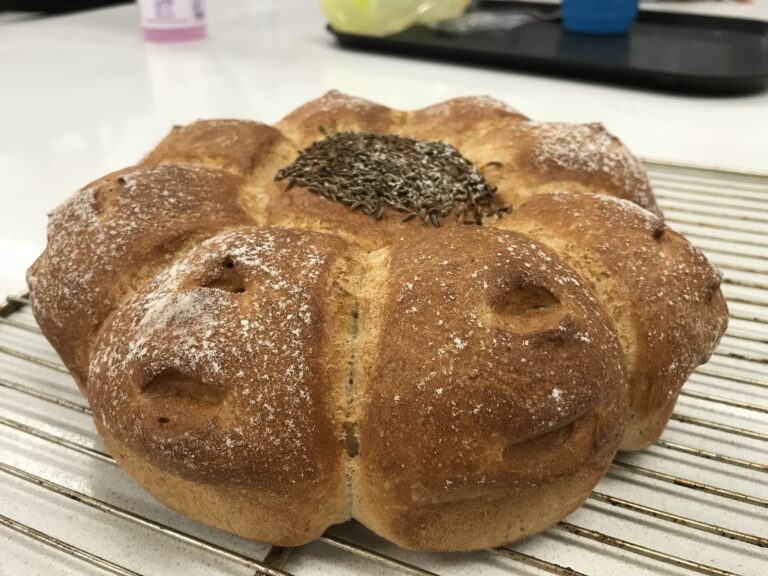
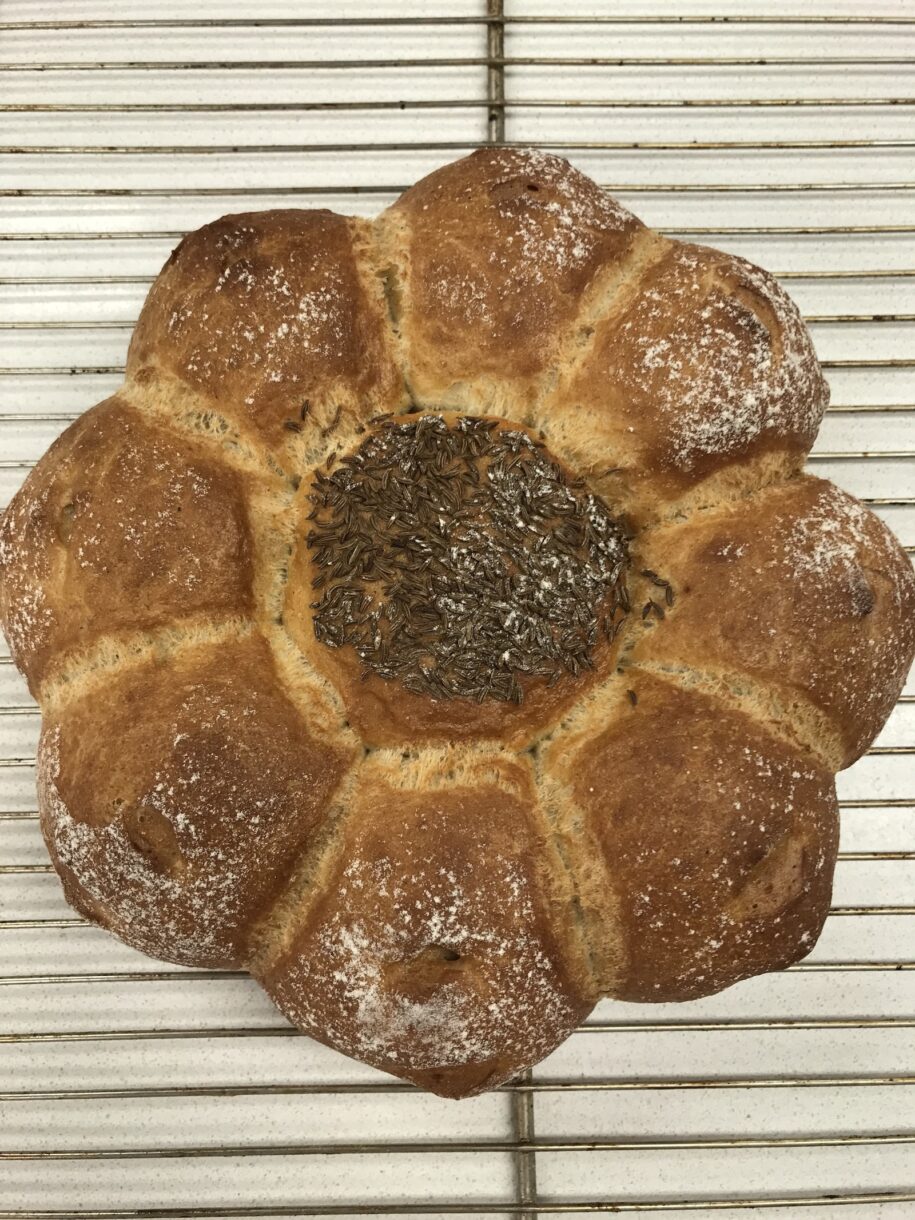
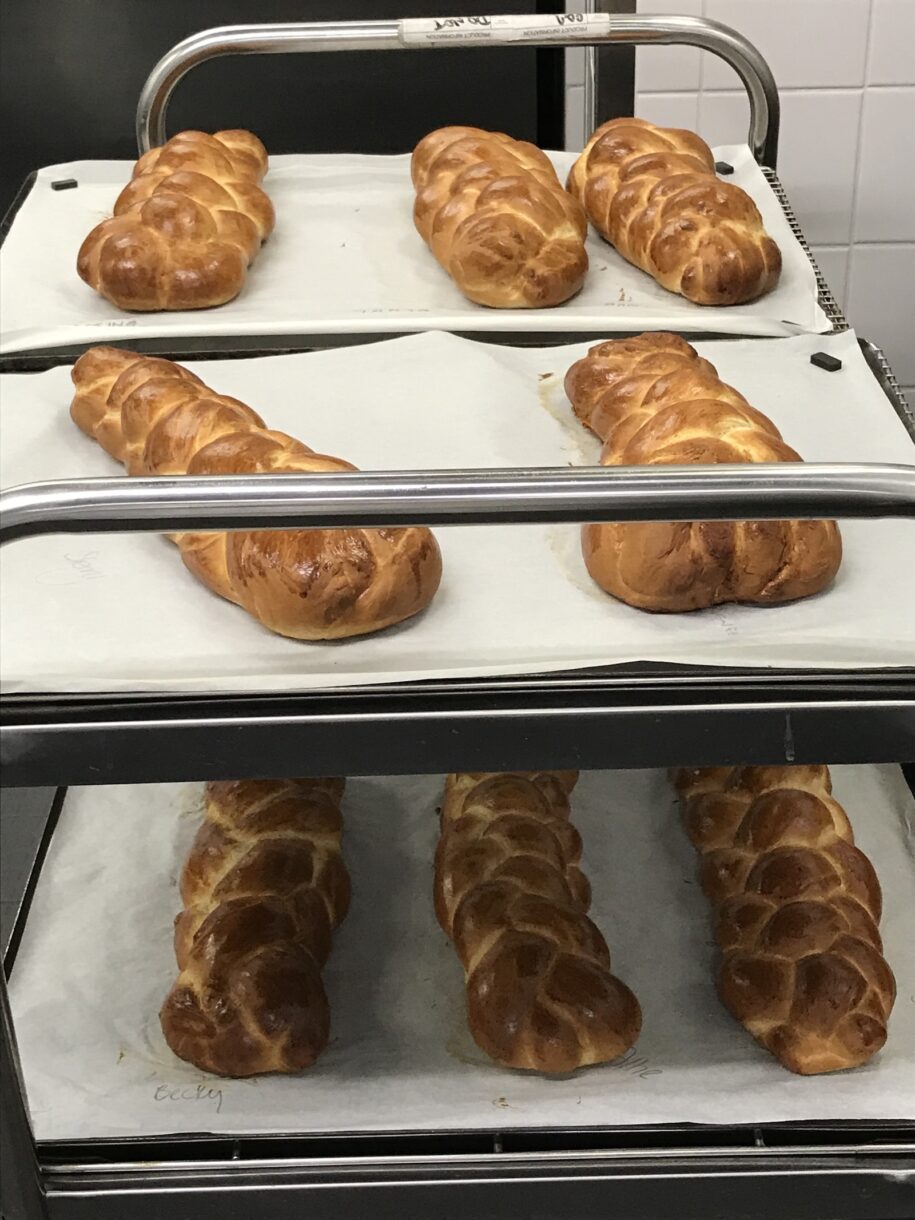

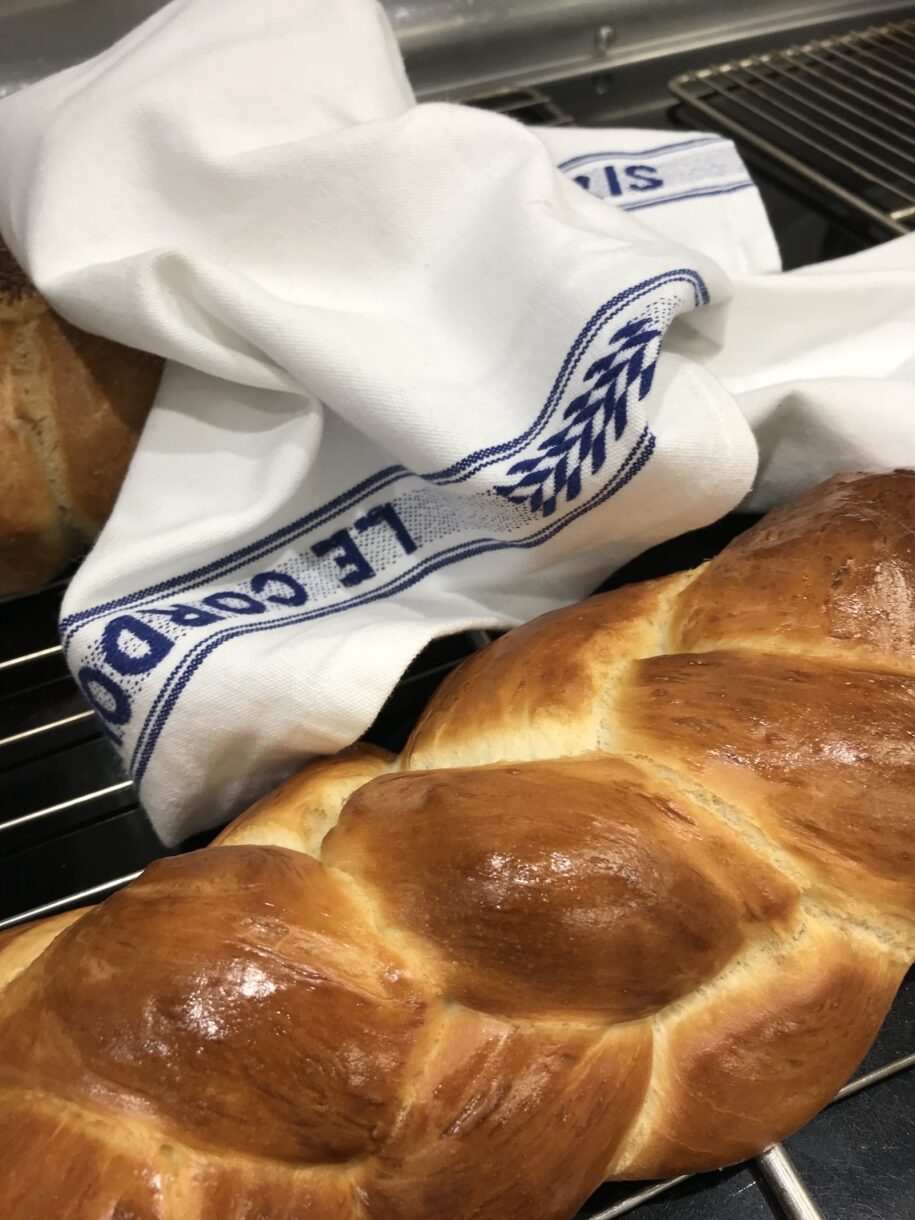
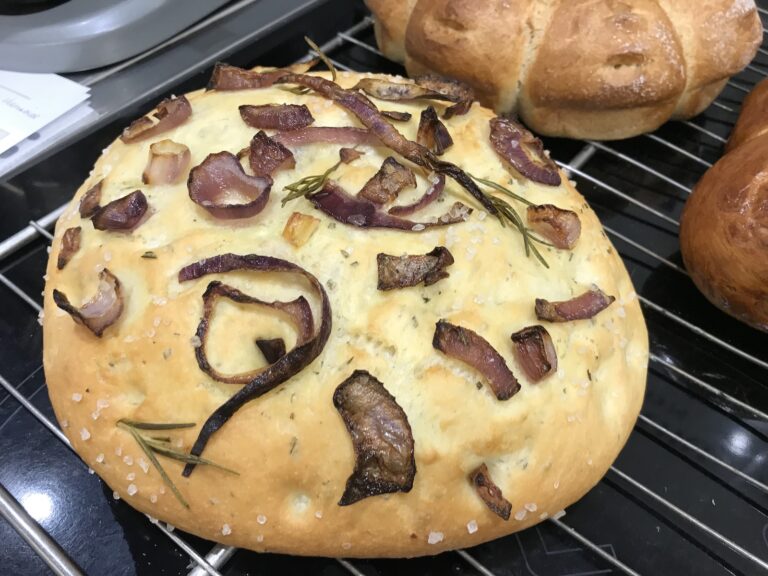
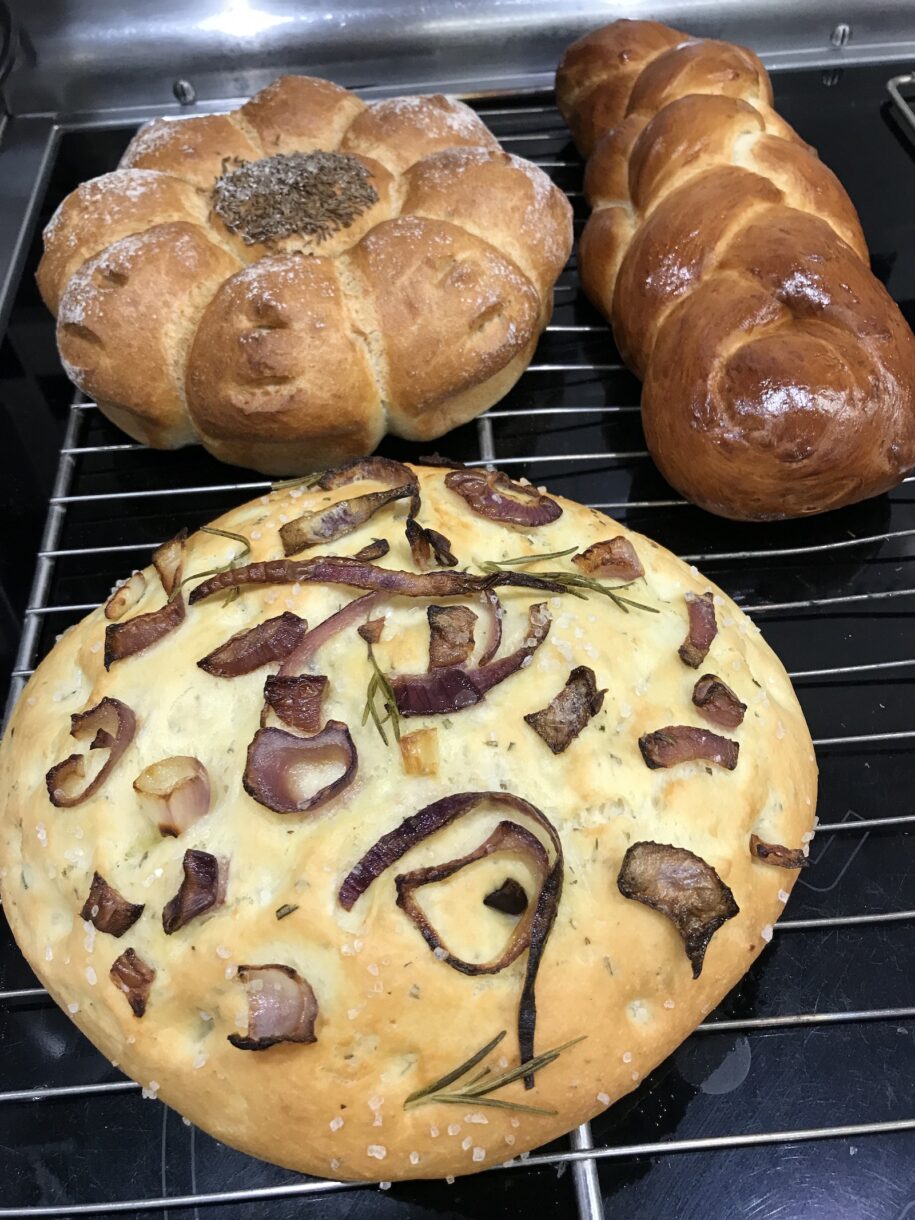

Our second demo and practical of the week focused on chocolatework. Specifically, learning to temper chocolate, create and apply transfer sheets, and making other forms of chocolate decoration:
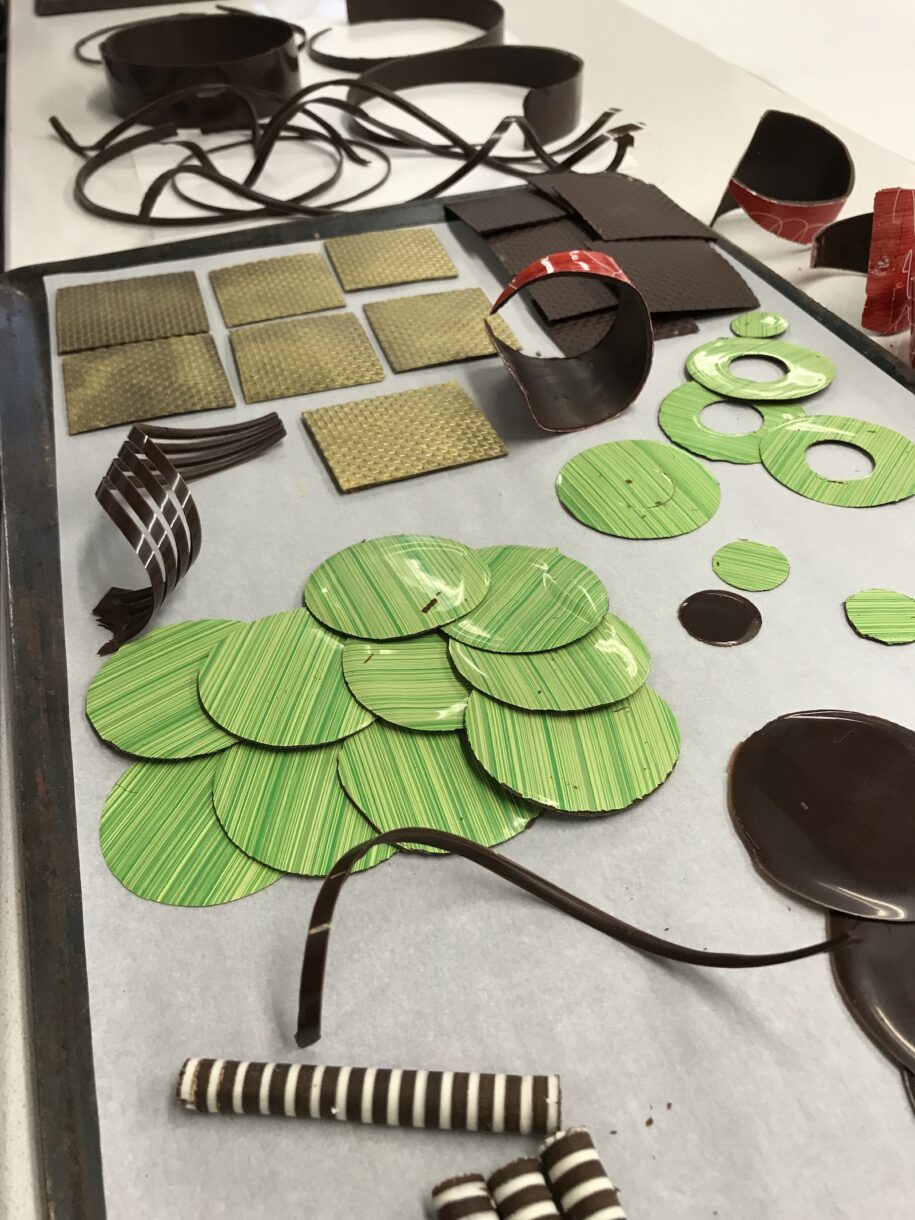
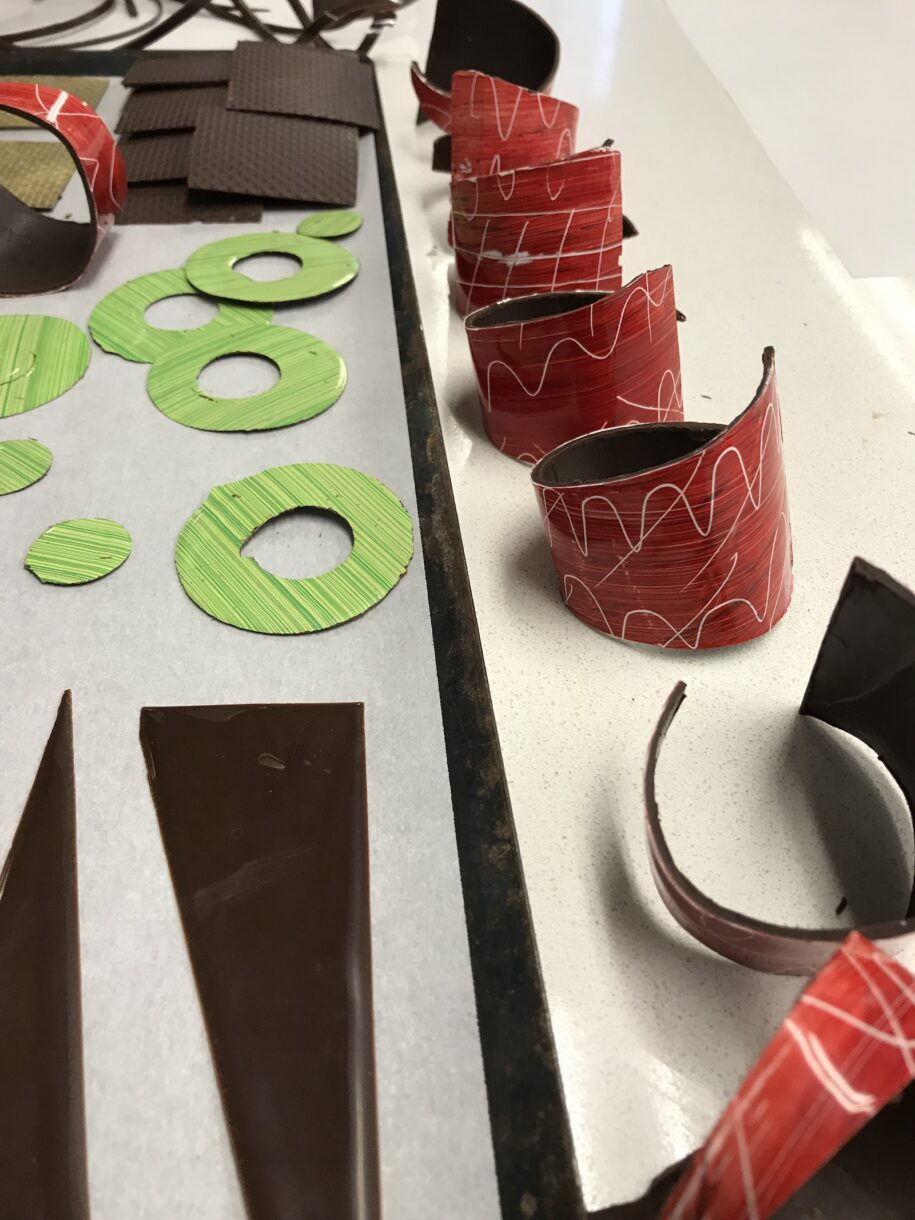
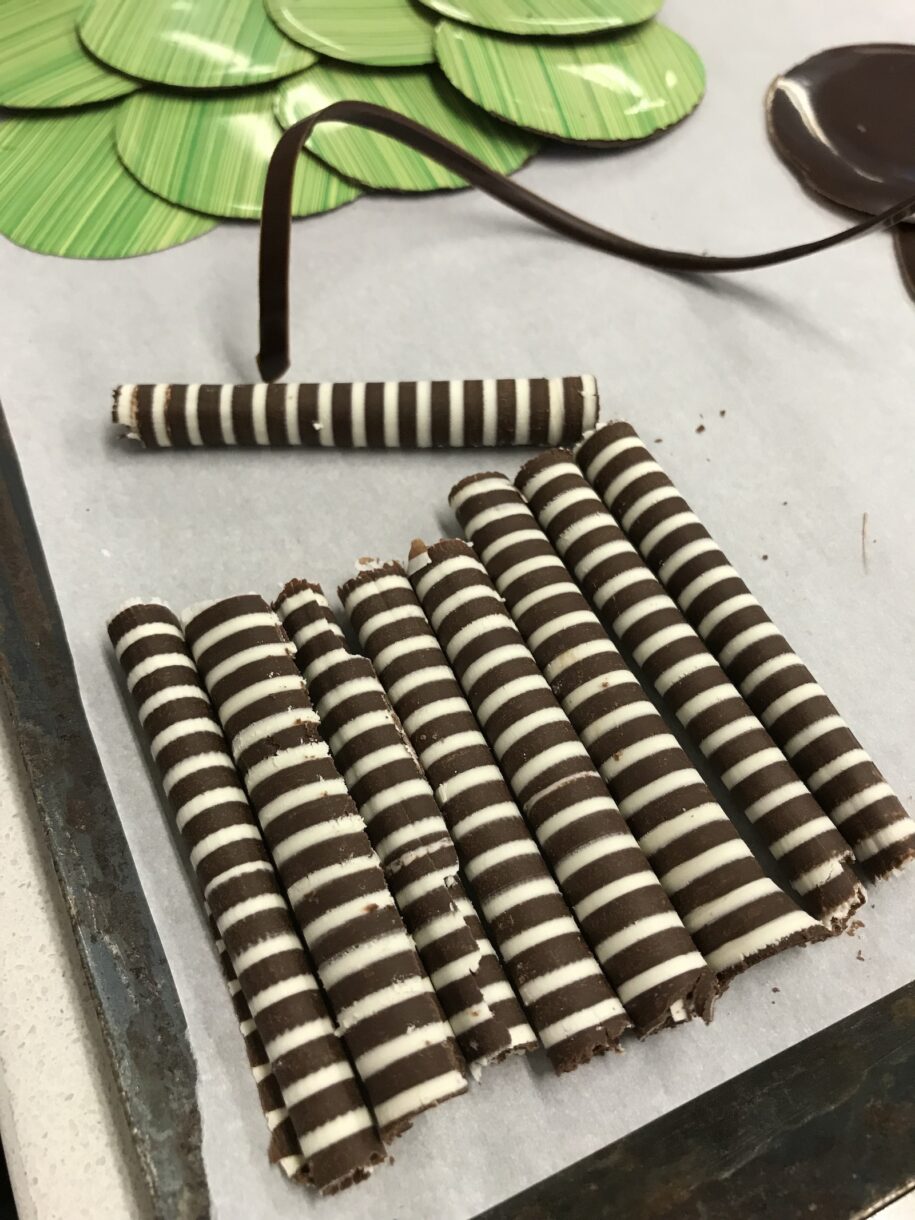

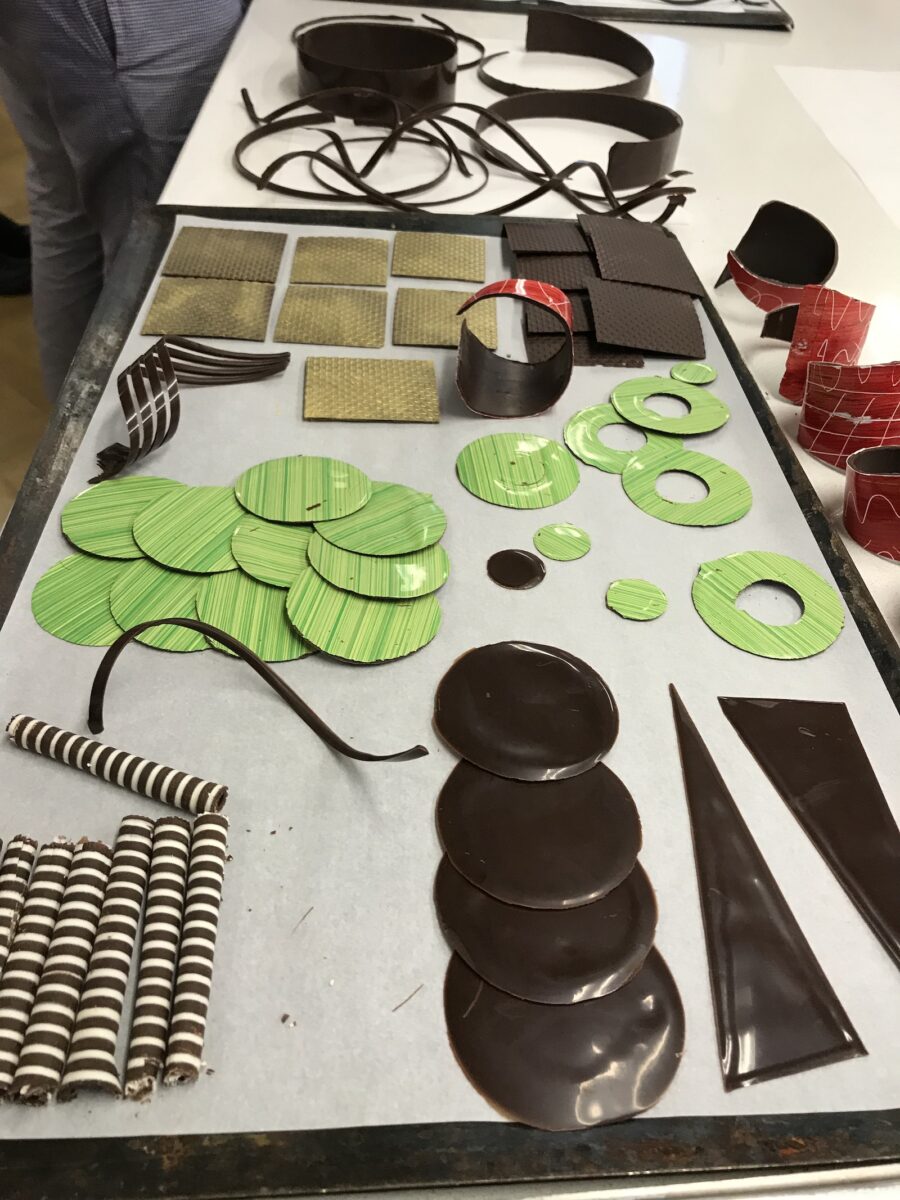

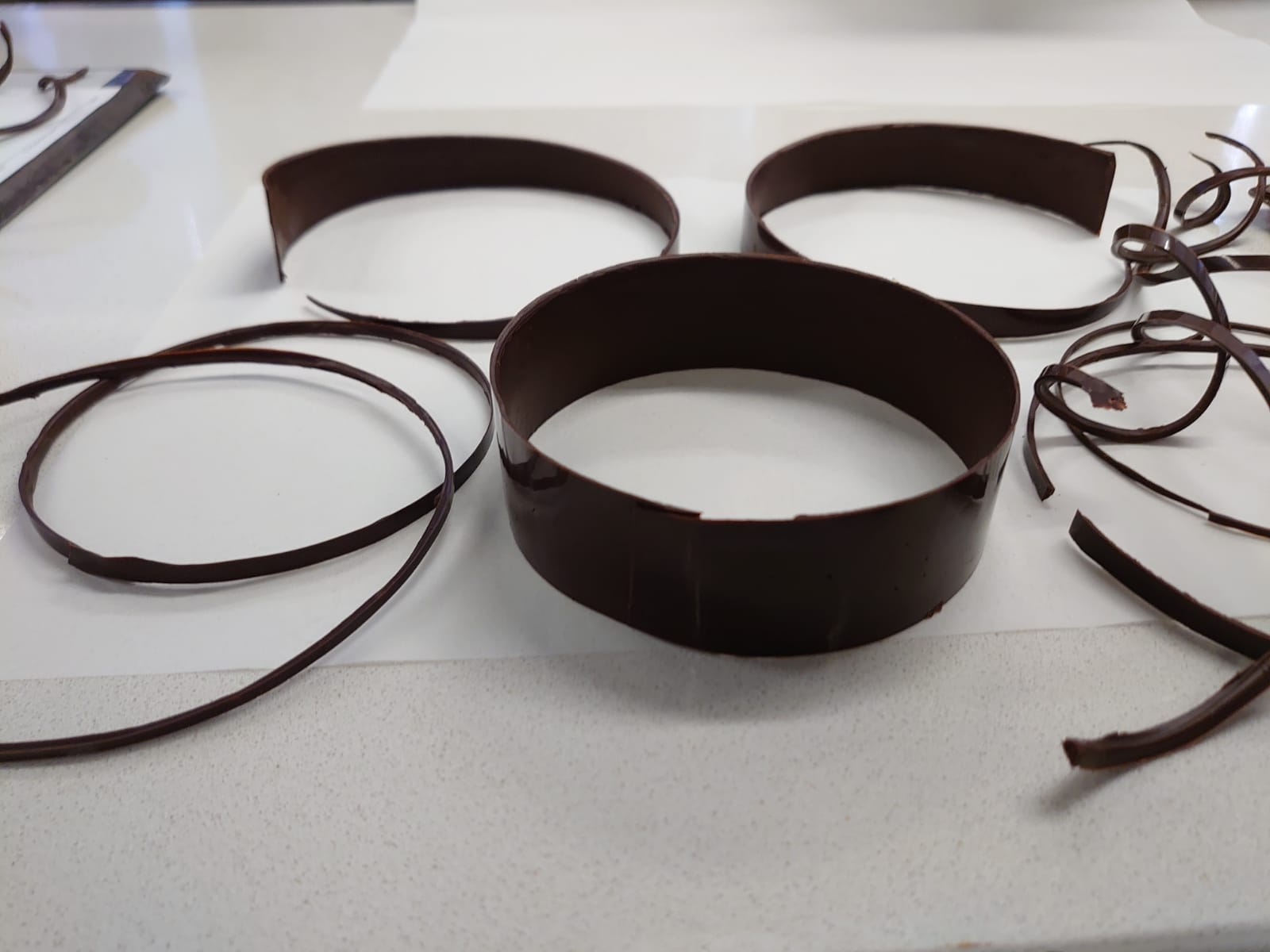


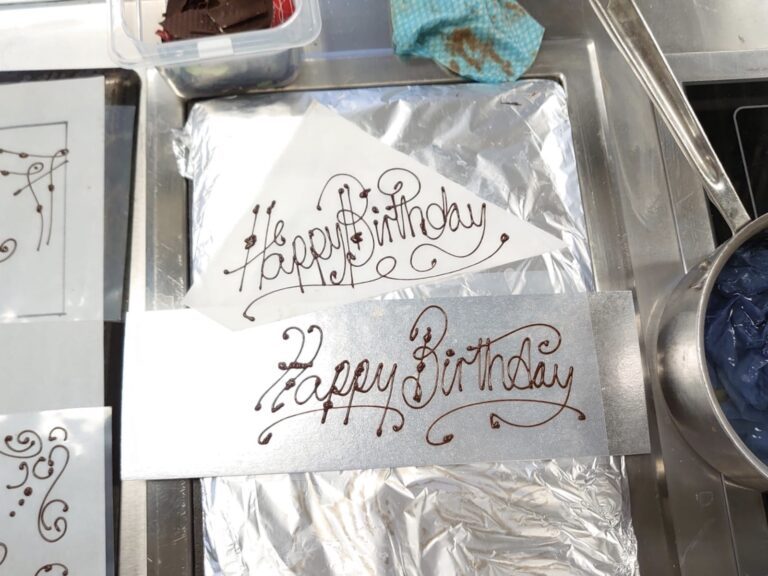
For our very last class of the week, we had a technical lesson where we learned to make verrines, or layered desserts served in small glasses. We watched the chef make a citrus and speculoos verrine with praline and almond mousse, and a white chocolate and raspberry sorbet with sesame crumble and a lime and mint jelly:
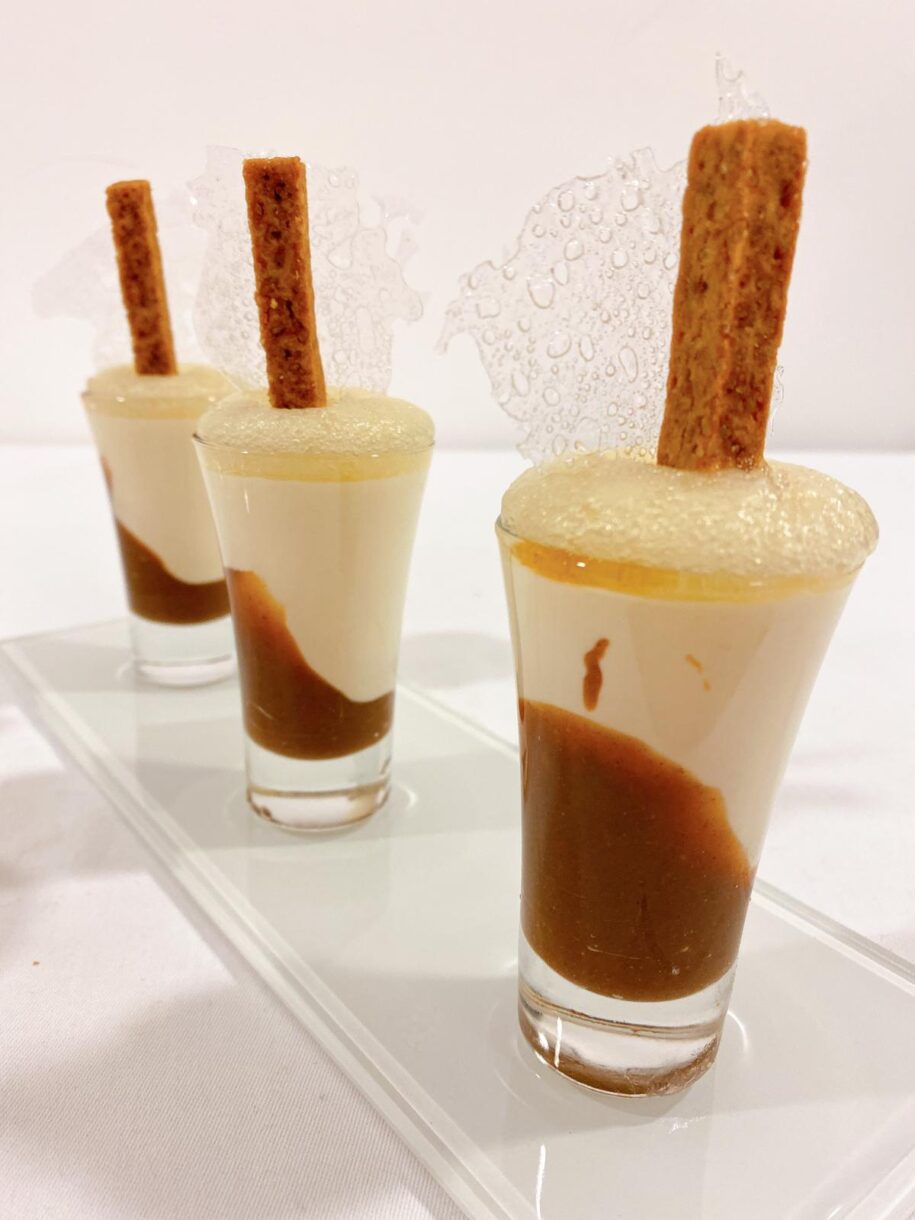

Missed last week’s recap? Read about week one here.
 About Rebecca:
About Rebecca:
Rebecca earned the Diplôme de Pâtisserie from Le Cordon Bleu London in 2020. She kept this detailed diary as a record of her journey, and as a way to help others decide if pastry school might be the right choice for them. Rebecca also holds an MSc in Culinary Innovation from Le Cordon Bleu and Birkbeck, University of London, and a Professional Chocolatier’s Certificate from Ecole Chocolate. She currently works as a recipe developer, food stylist, food photographer, writer, and pastry chef. Feel free to make one of her original recipes, or to follow her on Instagram @bastecutfold for more baking and pastry inspiration!
